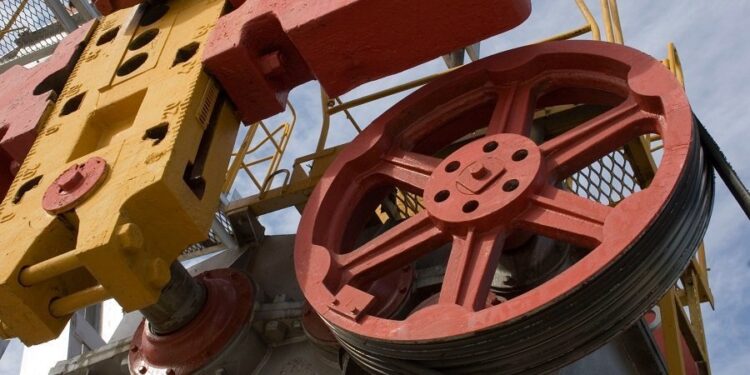Russia Plans to Use Synchrotron Radiation for Oil Production
Russian scientists expect to increase the oil recovery of the Bazhenov and Achimov formations due to synchrotron radiation.
This was stated by the director of the scientific and educational center of Gazpromneft-NGU S. Golovin.
Gazprom Neft, universities and scientific organizations will create a consortium that will study the Bazhenov and Achimov formations to solve the problem of intensifying the production of hard-to-recover oil reserves (HRR) from these reservoirs.
Theses of S. Golovin:
- there is also a predictive task, but it is more a task of intensifying oil production;
- because when extracting oil from low-permeability formations under normal conditions, the filtration rate is such that in years we will get the first liters of oil;
- in order to make it move in the reservoir, in order to increase the oil recovery factor, this requires the development of technologies that we are talking about;
- The Bazhenov Formation, the Achimov Formation – this is exactly the object that we are going to study.
To solve this problem, a consortium of 8 organizations will be created, the corresponding agreement is expected to be signed during the international forum Technoprom, which will be held August 22-25 in Novosibirsk.
The consortium will include:
- NSU;
- TPU;
- KFU;
- Central Collective Use Center SKIF (Siberian Ring Photon Source Synchrotron, SKIF);
- Gazprom Neft;
- structures of the SB RAS.
The members of the consortium will prepare methods so that by the time the SKIF is launched, it will already be possible to come up with specific tasks for their solution.
Theses of S. Golovin:
- the synchrotron allows you to look into the microcosm of the oil reservoir, what is happening there at the level of tens to hundreds of nanometers;
- and this will allow us to make significant progress in understanding processes, tuning these processes and creating new approaches;
- such a comprehensive study, I hope, will allow us to reach the advanced world level in this area;
- and from 2025 to start applying this not only for Gazprom Neft, but also for all interested Russian and even international companies.
Bazhenov suite
A group of oil source rocks (formation), occupying an area of about 1 million km2 in Western Siberia.
According to Rosnedra in 2012, the rocks may contain 180-360 billion barrels. recoverable reserves.
Achimov Formation
Achimov deposits occur at depths of about 4000 m and have a much more complex geological structure compared to the Cenomanian (located at a depth of 1100-1700 m) and Valanginian (1700-3200 m) deposits.
The reserves of the Achimov deposits in the area where Gazprom Dobycha Urengoy operates alone amount to more than 1 trillion m3 of natural gas and more than 400 million tons of gas condensate (C1 category).
The development of hard-to-reach Achimov deposits will make it possible to extract additional volumes of hydrocarbons from fields with declining production.
The SKIF
The SKIF Shared Use Center is a 4+ generation synchrotron radiation source unique in its characteristics, which is an accelerator where particles move along a ring in a vacuum at almost the speed of light, and powerful electromagnets give them energy and set the trajectory of movement.
The construction of the SKIF synchrotron began on August 25, 2021 in the vicinity of the Koltsovo science city in the Novosibirsk Region, not far from the SSC Vector.
In December 2024, it is planned to launch the synchrotron and stations of the 1st stage, at the beginning of 2025 – to start their trial operation.
According to the initial project, the SKIF CCU will include 30 experimental stations.
14 will use the radiation of plug-in devices (placed in straight sections of the main ring 4-6 meters long),
16 will be placed on beams of bending magnets;
It is planned to study the structures of biopolymers, the mechanisms of functioning of living organisms, the transmission of hereditary information, the mechanism of action of drugs, the creation of new materials, the study of fast processes, etc. at the stations.
SKIF will become the world’s first source of generation 4+ synchrotron radiation with an energy of 3 GeV.
The construction of the SKIF CCU was initially estimated at 37.1 billion rubles.
at the moment, the final cost of the entire project is 47.3 billion rubles.











